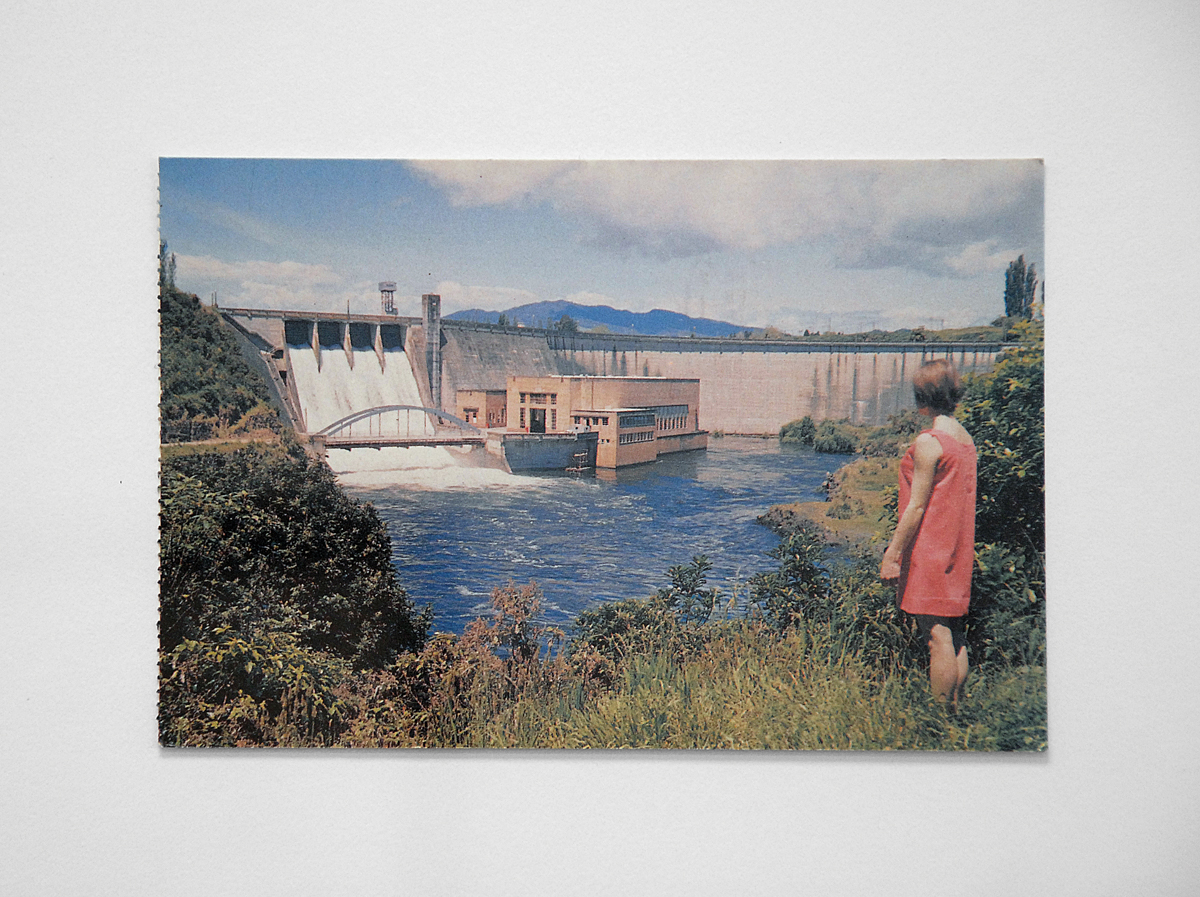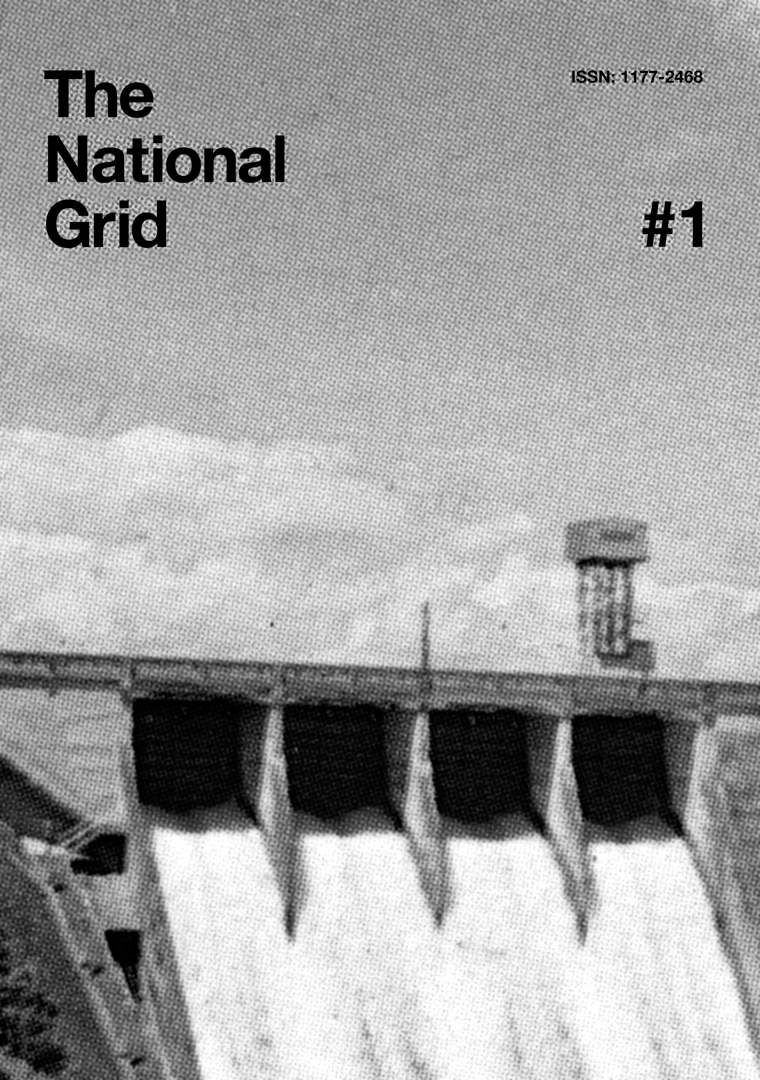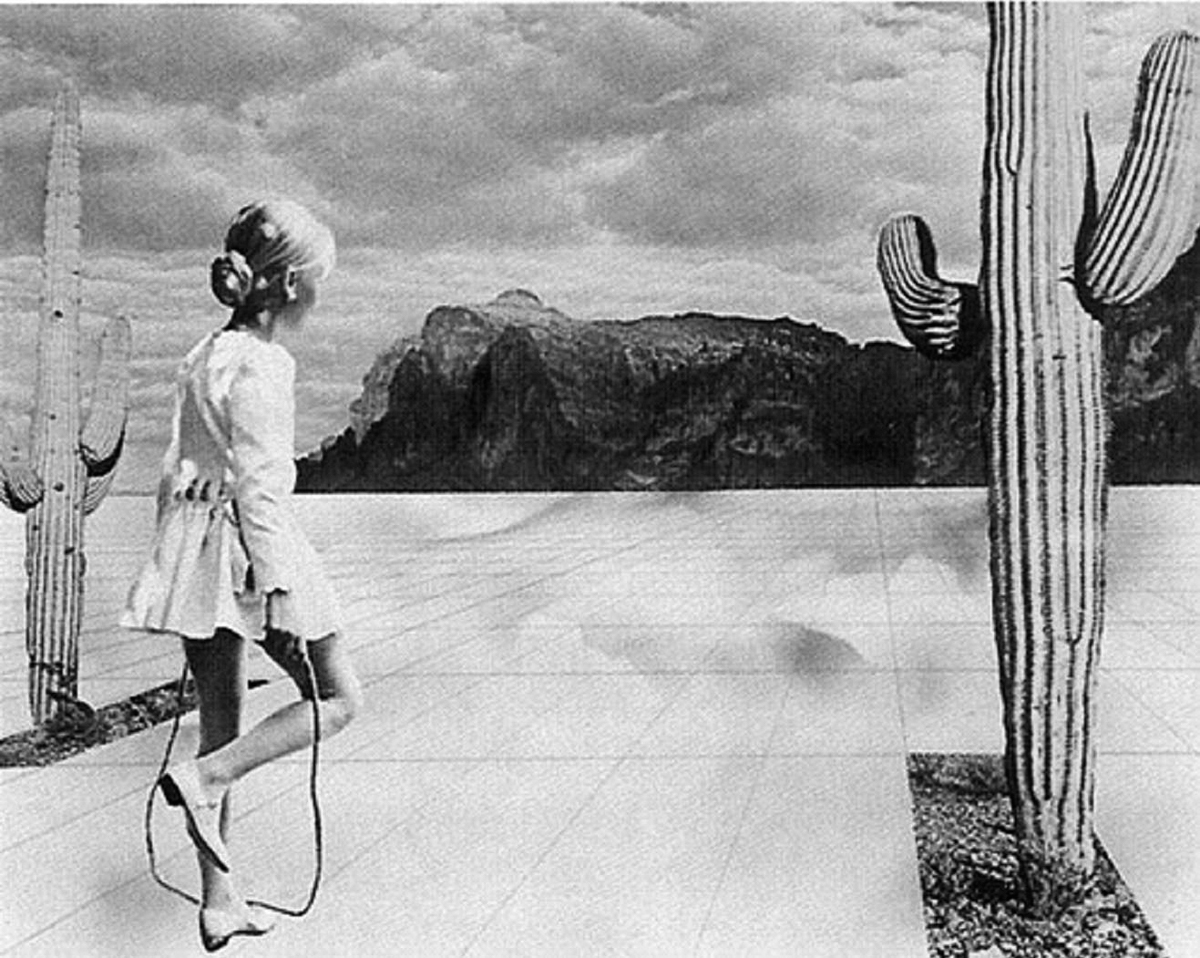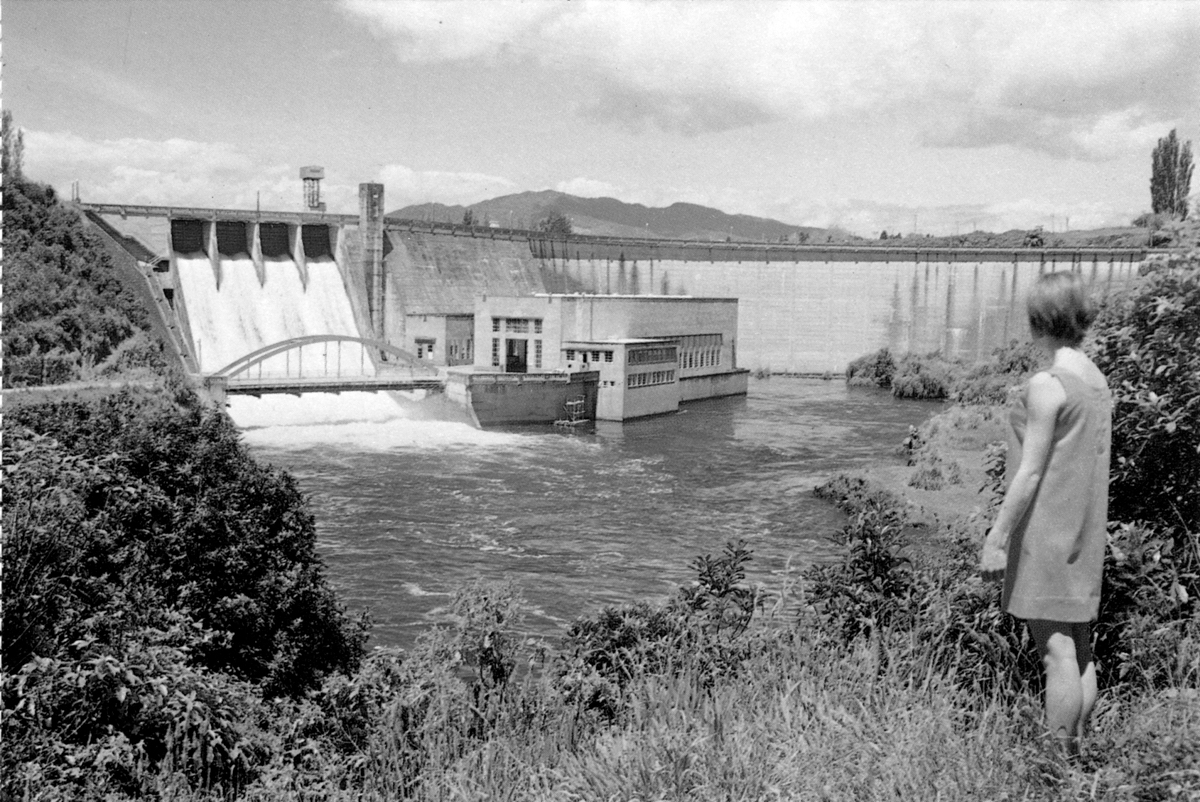The postcard from #1 – Max Lozach

Waikato Souvenir Distributors, Parnellc. 1970

The cover of the first National Grid featured a close up, cropped reproduction of an old (c.1970s) postcard showing a young woman looking out over Lake Karipiro Power Station. The crop only allows for blue sky in the top two thirds of the cover and the dam’s spillway in the bottom third. Enlarging the original image significantly reveals the printing rosette, ‘The National Grid #1’ is typeset in the composition’s top third in black Helvetica Bold, a typical and designer-like manner. I have always liked this cover as it feels obvious and natural to me, never requiring too much thought. The masthead’s typesetting—ironic or not—always spoke of graphic design to me while the revealed rosette portrayed the discipline’s fascination with it’s own process. And again, unquestionable that a publication from The South Island—where 98.3 percent (in 2011) of it’s electricity is generated by hydroelectricity—called The National Grid would feature an image of a Dam. I’ve always heard the water rushing down the spillway, but is it loud, silencing all else, or more a calming and unnoticed white noise? My only query was, being the maiden issue, were Luke and Jonty treating this cover as an announcement of their arrival or their point of departure?
Revisiting the postcard now—I can’t help but picture the photo- montage ‘Happy Island’ by Superstudio which features a young girl with a skipping rope looking out over the island to the distant mountains. Both images are optimistic if not promising, exploring the “combination of environmentally modified agricultural landscapes... and ‘wild’, ‘natural’, and ‘untamed’ indigenous flora and fauna”,1 and have a domestic, well dressed young female contemplating the scene before them which tends to indicate this is all for them. This is more aggressive in the photomontage where the young girl is framed by cacti as starting gates and she carries a skipping rope to merrily and naively enter this clean new world. The left arm of the young woman looks uncomfortable as though she wants to hold back or clutch onto something valuable and known in her hand. The young girl in white has the skipping rope in front of her feet as if she has stopped in uncertainty or maybe in awe. Either way we’re left to consider what it is they’re thinking or feeling before we push them out into the landscape to go and make some sense of it all.

